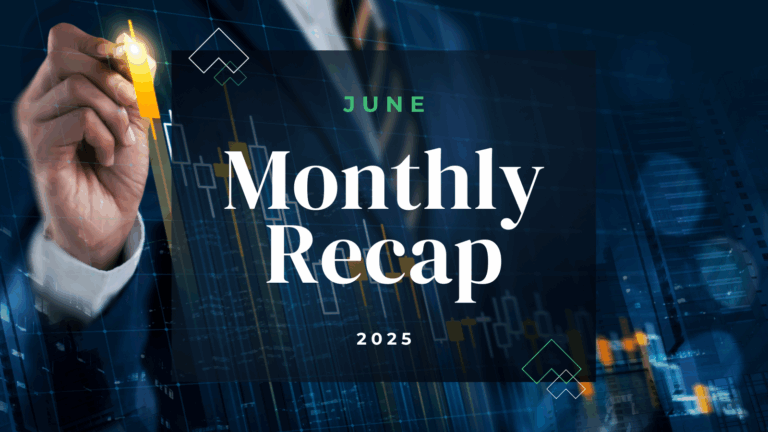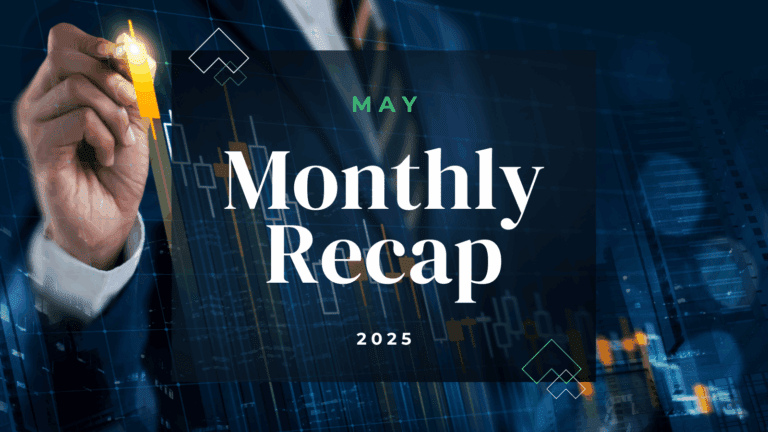Aoifinn Devitt – Chief Investment Officer
Although only early April, violent Spring storms have already worked their way across much of the Midwest, disrupting flights and wreaking havoc in small communities. In a similar fashion, the first quarter of 2023 was
described as a “wild” quarter in markets as a cascade of economic data, some of it surprising, met with a leftfield surprise of trouble in the ranks of smaller, regional banks, sparked by the collapse of Silicon Valley Bank on March 10th.
Economic Overview
The background music to the first quarter of the year was the steady drumbeat of recession expectations. While the year kicked off with a recession broadly expected by most commentators, the economic data persistently defied expectations. Employment remained robust in the U.S., with jobs reports in January and February exceeding expectations and rendering a buoyant employment picture. This started to falter somewhat in early April, when there was evidence of job openings moderating to a more normal level and a slight uptick in the participation rate, but the overall strong picture bolstered spending economic activity.

U.S. Gross Domestic Product (GDP) growth remained modest but positive nonetheless, again defying expectations of a recession but not so frothy as to lift consumer sentiment, which still languished despite these positive points of hard data. Consumer sentiment has remained below the long-term average since the pandemic, which may be attributable in part to mounting inflation worries.
Inflation was widely expected to moderate and start to tick downwards in 2023 as we worked off the dislocations and supply chain anomalies that drove some of it in 2022, while a mild winter in Europe muted the impact of higher energy prices caused by the war in Ukraine. As the charts below show, inflation did start to trend downwards around the world for the first part of the year, but progress was slow and this led to some volatility in sentiment and concerns around the future trajectory of interest rate hikes.

Central banks worldwide remained under the spotlight as inflation was understood to be a harbinger of their action – would there be a deceleration or a pivot in the sharply rising rate increases? Initially, this seemed to be in the cards – with the US Federal Reserve delivering their ninth consecutive rate rise, albeit with a more modest 25 bps rise in February, while other central banks around the world slowed their pace of rate hikes. Central bank language remained resolute and stern, and it was as if the institutions wanted to give no indication of a slackening of their resolve. Fed Chairman Jerome Powell went on what can only be described as an apology tour of sorts – seeking to disabuse markets of any notion that the institution had lost focus on their goal of tackling inflation. The yield curve remained inverted, though, suggesting that the markets had strong conviction that a pivot and actual reduction in rates was coming in the future. An inverted yield curve is traditionally an indicator of a recession, and indeed, the steepness of the inversion sowed the seeds for some of the travails that later beset banks.

The carefully orchestrated Fed interest rate narrative was put in disarray with the bank surprise of early March. When Silicon Valley Bank collapsed due to a mismatch in its assets (fixed income holdings) and liabilities (customer deposits, this sparked a crisis of confidence in banks and a fear for the safety of cash deposits (which we detailed in two separate research pieces on the collapse of Silicon Valley Bank and the forced sale of Credit Suisse). In the critical few weeks between the announcement of Silicon Valley Bank’s woes and the Fed’s decision in late March, there was an expectation that this would halt the Fed’s interest rate trajectory due to the specter of systemic market weakness. Ultimately, it did not, and the subsequent rate hike of 25 bps happened amid a similar discussion of inflation and economic activity as earlier hikes had, but something had changed nonetheless.
The bank crisis of the first quarter of 2023 is still perhaps in motion – there is still a laser focus on bank deposits and their movement. As we enter earnings season, investors will wish to see stability in the deposit base of banks to avert more fears of fragility in the banking complex. The fears of bank deposits being less than secure were manifest in notable changes to flows over the quarter, as assets flowed into money market funds, gold, and even Bitcoin over the course of the last few weeks, and total assets in money market funds now top $5 trillion.

Asset Performance

Despite the muted consumer sentiment discussed earlier, liquidity remains abundant in markets, and it is notable that equities have remained well-supported year-to-date, particularly within the growth segment. While value stocks have come under pressure due to losses in financials, core and growth-oriented portfolios have delivered a solid quarter, suggesting that the liquidity that remains in place is continuing to seek a return.
Bonds, too, were the beneficiaries of positive inflows as the interest rates on offer simply became too good to ignore, and fixed income enjoyed positive performance across the risk spectrum, as the table above shows.
Real assets and infrastructure – traditionally seen as inflation participating assets – also performed strongly over the course of the quarter, as the table above indicates.
Finally, the US dollar had a challenging quarter, losing 1.0% of its value as the interest rates trajectory in the US looked set to slow. We will continue to monitor this carefully, although it likely will, in the near-term, bolster non-US stock holdings in relative terms.

Outlook
As we look to the second quarter, despite the recent jump in the price of oil, other inflation indicators are still more subdued, and there is a sense that we may be rounding the corner of persistently high inflation. This should see the interest rate hike trajectory near its end, although whether and for how long the Fed sees fit to stay stable there will surely depend on market forces.

While we welcome the recovery across asset classes in the early part of 2023, we are cautious around the potential for the Silicon Valley Bank scenario to have consequences for the pace of corporate lending and the level of consumer trust, which could impact the “plumbing” in the financial system to a point of undermining confidence. While we have not yet seen any significant wave of corporate defaults, despite the massive upset of the COVID crisis, there are some warning indicators – as indicated by news of large-scale layoffs, building levels of inventory and shrinking margins that suggest that some companies were quite over-extended in recent years. As the dust settles from a “wild” first quarter in markets, we remain on guard for the next potential “weather” event.
DISCLOSURE
© 2023 Advisory services offered by Moneta Group Investment Advisors, LLC, (“MGIA”) an investment adviser registered with the Securities and Exchange Commission (“SEC”). MGIA is a wholly owned subsidiary of Moneta Group, LLC. Registration as an investment advisor does not imply a certain level of skill or training. The information contained herein is for informational purposes only, is not intended to be comprehensive or exclusive, and is based on materials deemed reliable, but the accuracy of which has not been verified.
Trademarks and copyrights of materials referenced herein are the property of their respective owners. Index returns reflect total return, assuming reinvestment of dividends and interest. The returns do not reflect the effect of taxes and/or fees that an investor would incur. Examples contained herein are for illustrative purposes only based on generic assumptions. Given the dynamic nature of the subject matter and the environment in which this communication was written, the information contained herein is subject to change. This is not an offer to sell or buy securities, nor does it represent any specific recommendation. You should consult with an appropriately credentialed professional before making any financial, investment, tax or legal decision. An index is an unmanaged portfolio of specified securities and does not reflect any initial or ongoing expenses nor can it be invested in directly. Past performance is not indicative of future returns. All investments are subject to a risk of loss. Diversification and strategic asset allocation do not assure profit or protect against loss in declining markets. These materials do not take into consideration your personal circumstances, financial or otherwise.
DEFINITIONS
The unemployment rate represents the number of unemployed as a percentage of the labor force. Labor force data are restricted to people 16 years of age and older, who currently reside in 1 of the 50 states or the District of Columbia, who do not reside in institutions (e.g., penal and mental facilities, homes for the aged), and who are not on active duty in the Armed Forces.
The Atlanta Fed’s Wage Growth Tracker is a measure of the nominal wage growth of individuals. It is constructed using microdata from the Current Population Survey (CPS), and is the median percent change in the hourly wage of individuals observed 12 months apart. Our measure is based on methodology developed by colleagues at the San Francisco Fed.
The Recession time series is an interpretation of US Business Cycle Expansions and Contractions data provided by The National Bureau of Economic Research (NBER). Our time series is composed of dummy variables that represent periods of expansion and recession. The NBER identifies months and quarters of turning points without designating a date within the period that turning points occurred. The dummy variable adopts an arbitrary convention that the turning point occurred at a specific date within the period. The arbitrary convention does not reflect any judgment on this issue by the NBER’s Business Cycle Dating Committee. A value of 1 is a recessionary period, while a value of 0 is an expansionary period. For this time series, the recession begins the first day of the period following a peak and ends on the last day of the period of the trough. For more options on recession shading, see the notes and links below. Federal Reserve Bank of St. Louis, NBER based Recession Indicators for the United States from the Period following the Peak through the Trough [USREC], retrieved from FRED, Federal Reserve Bank of St. Louis; https://fred.stlouisfed.org/series/USREC, April 10, 2023.
The Surveys of Consumers are conducted by the Survey Research Center at the University of Michigan. The Index of Consumer Expectations focuses on three areas: how consumers view prospects for their own financial situation, how they view prospects for the general economy over the near term, and their view of prospects for the economy over the long term. The Expectations Index represents only a small part of the entire survey data that is collected on a regular basis. Each monthly survey contains approximately 50 core questions, each of which tracks a different aspect of consumer attitudes and expectations. The samples for the Surveys of Consumers are statistically designed to be representative of all American households, excluding those in Alaska and Hawaii. Each month, a minimum of 600 interviews are conducted by telephone from the Ann Arbor facility. University of Michigan, University of Michigan: Consumer Sentiment [UMCSENT], retrieved from FRED, Federal Reserve Bank of St. Louis; https://fred.stlouisfed.org/series/UMCSENT, April 10, 2023.
Consumer prices (CPI) are a measure of prices paid by consumers for a market basket of consumer goods and services. The yearly growth rates represent the inflation rate. The harmonized index of consumer prices (HICP), used primarily within the European Union, is a measure of prices paid by consumers for a market basket of goods and services. It is calculated using the same methodology across countries to allow for comparable measures of inflation. The yearly growth rates represent the inflation rate.
Inflation estimates are the Bloomberg Weighted Average of analysts’ and economists’ inflation forecasts; surveyed monthly.
The U.S. Treasury yield curve refers to a line chart that depicts the yields of short-term Treasury bills compared to the yields of long-term Treasury notes and bonds. The chart shows the relationship between the interest rates and the maturities of U.S. Treasury fixed-income securities. The Treasury yield curve (also referred to as the term structure of interest rates) shows yields at fixed maturities, such as one, two, three, and six months and one, two, three, five, seven, 10, 20, and 30 years. Because Treasury bills and bonds are resold daily on the secondary market, yields on the notes, bills, and bonds fluctuate.
The US Dollar Index measures the US dollar against six global currencies: the euro, Swiss franc, Japanese yen, Canadian dollar, British pound, and Swedish krona.
The Alerian MLP Index is a capped, float-adjusted, capitalization-weighted index, whose constituents earn the majority of their cash flow from midstream activities involving energy commodities.
The Bloomberg Barclays US Aggregate Bond Index is a broad-based flagship benchmark that measures the investment grade, US dollar-denominated, fixed-rate taxable bond market.
The Bloomberg Barclays US Corporate High Yield Bond Index measures the USD-denominated, high yield, fixed-rate corporate bond market.
The Bloomberg Barclays US Treasury Index measures US dollar-denominated, fixed-rate, nominal debt issued by the US Treasury.
The FTSE Nareit All Equity REITs Index is a free-float adjusted, market capitalization-weighted index of U.S. equity REITs. Constituents of the index include all tax-qualified REITs with more than 50% of total assets in qualifying real estate assets other than mortgages secured by real property.
The MSCI EAFE Index is an equity index which captures large and mid-cap representation across 21 Developed Markets countries around the world, excluding the US and Canada.
The MSCI Emerging Markets Index captures large and mid-cap representation across 27 Emerging Markets (EM) countries.
The Russell 2000 Index is a small-cap stock market index of the smallest 2,000 stocks in the Russell 3000 Index.
The S&P 500 Index is a free-float capitalization-weighted index of the prices of approximately 500 large-cap common stocks actively traded in the United States.
The S&P Global Infrastructure Index provides liquid and tradable exposure to 75 companies from around the world that represent the listed infrastructure universe. The index has balanced weights across three distinct infrastructure clusters: Utilities, Transportation, and Energy.







